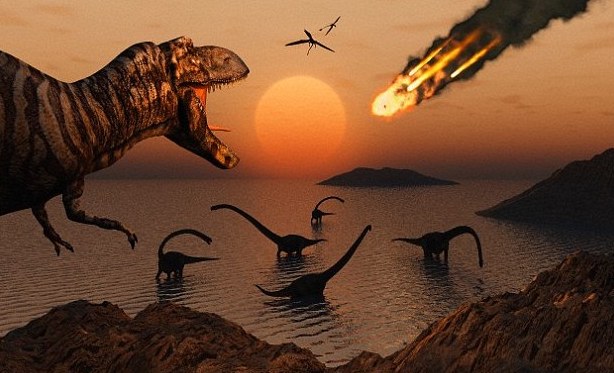Researchers has revealed that dinosaurs were not the only casualty of the catastrophic asteroid event 66 million years ago.
The researchers have discovered that the world’s forests were also completely destroyed, which caused the extinction of tree-dwelling birds.
Study co-author Regan Dunn is a paleontologist at the Field Museum in Chicago.
“Looking at the fossil record, at plants and birds, there are multiple lines of evidence suggesting that the forest canopies collapsed,” said Dunn.
Lead author Daniel Field explained that the team used a combination of techniques for the investigation.
“We concluded that the temporary elimination of forests in the aftermath of the asteroid impact explains why arboreal birds failed to survive across this extinction event,” said Field. “The ancestors of modern arboreal birds did not move into the trees until forests had recovered from the extinction-causing asteroid.”
Study co-author Antoine Bercovici is a pollen expert at the Smithsonian Institution and the Denver Museum of Nature and Science, Bercovici analyzed microscopic fossils of pollen and spores to determine that the planet’s forests were destroyed.
“After a disaster like a forest fire or a volcanic eruption, the first plants to come back are the fastest colonizers – especially ferns,” said Dunn. This is due to fact that ferns do not sprout from seeds, but from small spores that are made up of just a single cell.
“Spores are minuscule, the size of a grain of pollen, so they’re easily dispersed. They get picked up by the wind and go further than seeds can, and all they need to grow is a wet spot.”
“The spores are tiny – you could fit four across a single strand of your hair. To see them, we take a sample of rock from the time frame just after the collision and dissolve it in acid. Then we purify it so that all that remains is the organic debris, like pollen, spores and little leaf bits, then we look at them under a microscope.”
Immediately after the asteroid collided with the Earth, the fossil record showed the charcoal remains of trees, and then, tons of fern spores.
“Our study examined the fossil record from New Zealand, Japan, Europe and North America, which showed there was a mass deforestation across the globe at the end of the Cretaceous period,” said Bercovici.
The researchers found that the only birds that survived were ground-dwellers. Their fossilized remains contained strong legs like modern ground birds such as kiwis and emus. Tree-dwelling birds have delicate legs that are designed for perching on branches, and they had no place left to live.
“Today, birds are the most diverse and globally widespread group of terrestrial vertebrate animals–there are nearly 11,000 living species,” said Field. “Only a handful of ancestral bird lineages succeeded in surviving the mass extinction event 66 million years ago, and all of today’s amazing living bird diversity can be traced to these ancient survivors.”
Dunn pointed out that fossil plants are critical in reconstructing the history of life on earth.
“Plants are everything, plants are the context in which all terrestrial life evolves and survives. They’re primary producers, they make energy available to all life forms by capturing it from the sun–we can’t do that.”
Dunn also emphasized that the loss of life resulting from the mass extinction 66 million years ago is relevant today.
“The end-Cretaceous event is the fifth mass extinction – we’re in the sixth,” said Dunn. “It’s important for us to understand what happens when you destroy an ecosystem, like with deforestation and climate change–so we can know how our actions will affect what comes after us.”















